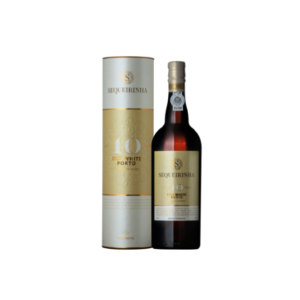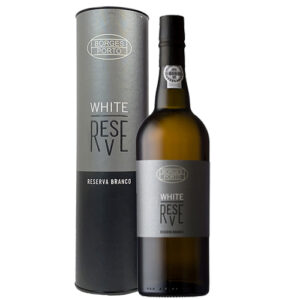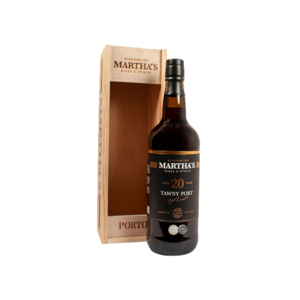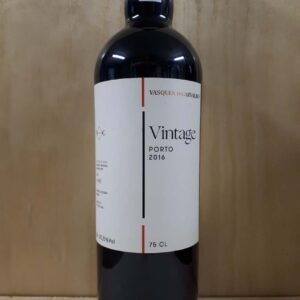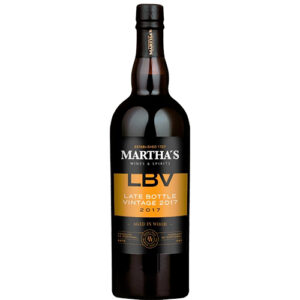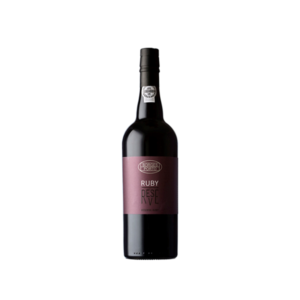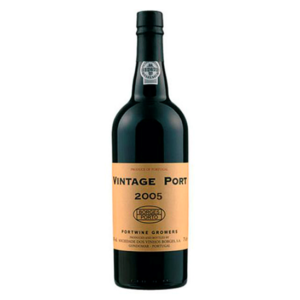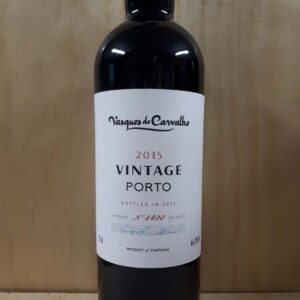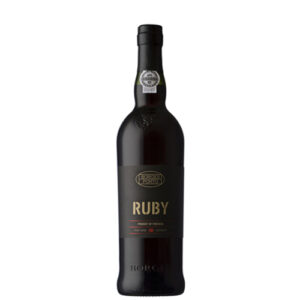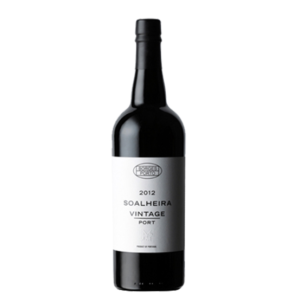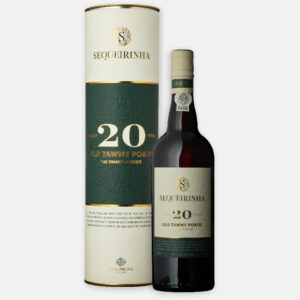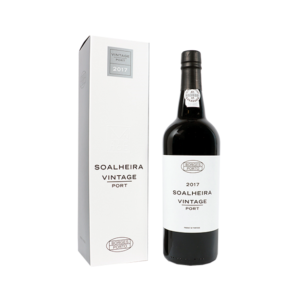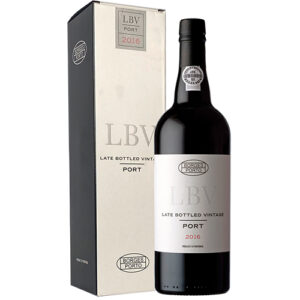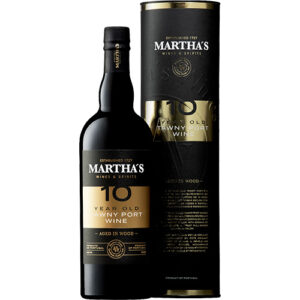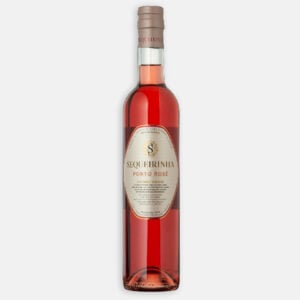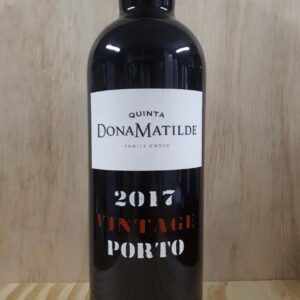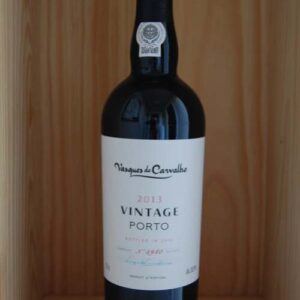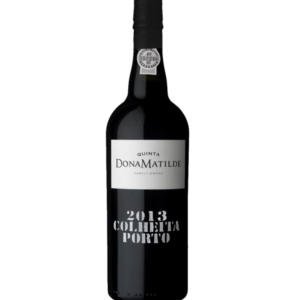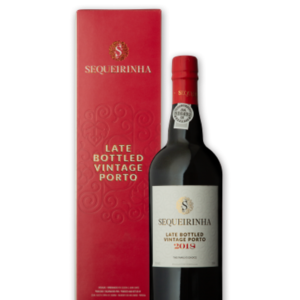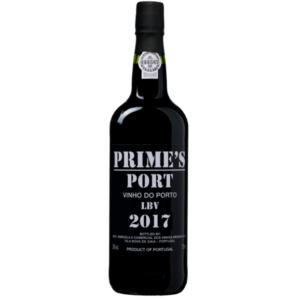Showing 1–24 of 47 resultsSorted by popularity
Port Wine – The Complete Guide
TL;DR: In Brief
- Port wine is characterized by its rich sweetness, higher alcohol content (usually 19-22%), and unique fortification process
- Produced primarily from native Portuguese grape varieties and defined by the addition of grape spirits during fermentation
- Found in several style variations, including Ruby, Tawny, White, and Vintage Port
- Best enjoyed in small servings at 12-16°C and can be experienced in cocktails like Port & Tonic or Port Negroni
Disclaimer: This guide is intended for informational purposes for adults over 18 years of age. Vault of Spirits encourages responsible alcohol consumption.
Introduction to Port Wine
Port wine has a rich history and fascinating craftsmanship behind it. From its origins in Portugal’s Douro Valley to its global popularity today, this fortified wine has evolved to become one of the world’s most treasured beverages.
This guide provides insight into the production, flavor notes, and enjoyment of Port wine, whether you’re a novice or experienced enthusiast.
With its distinctive sweet character and complex flavors, Port stands apart from other wines, offering a unique tasting experience that has captivated wine lovers for centuries.
How Did Port Wine Originate?
From Past to Present
Port wine’s story begins in the rugged Douro Valley of northern Portugal in the 17th century.
British merchants, facing difficulties with French wine imports due to political conflicts, turned to Portugal for wine.
To preserve the wine during long sea journeys to England, merchants began adding brandy to stabilize it before shipping.
This fortification process not only preserved the wine but also created a unique sweet profile as it stopped fermentation while natural sugar remained.
What began as a practical preservation method evolved into a deliberate winemaking style that would define Port for centuries to come.
Which Historical Milestones Have Shaped Port Wine?
The Methuen Treaty of 1703 between England and Portugal gave Portuguese wines preferential customs duties, boosting Port’s popularity in Britain.
In 1756, Portugal’s Prime Minister Marquis of Pombal established the world’s first formal wine appellation system, creating the Demarcated Region of Douro to protect authentic Port production.
The devastating phylloxera epidemic of the 1860s forced replanting of Douro vineyards, leading to better understanding of which grape varieties thrived in the region.
In the 20th century, modernization of Port production techniques and transportation methods (replacing wooden boats with road transport) made production more efficient while maintaining traditional quality.
How Has Port Wine Influenced Cultural Traditions?
In British culture, Port became associated with upper-class dining rituals, with the tradition of “passing the Port to the left” at formal dinners.
The British custom of enjoying Port with Stilton cheese after dinner has become an iconic food pairing.
In Portugal, Port wine is deeply integrated into national identity and celebrations, particularly during holiday seasons.
The traditional harvesting and foot-treading of grapes in large stone troughs called “lagares” represents a cultural heritage that some producers still maintain today.
Port houses established by British families centuries ago created a unique Anglo-Portuguese cultural fusion that still influences the industry.
Why Is Port Wine Popular Today?
Port has successfully balanced tradition with innovation, maintaining its historical character while adapting to modern palates.
The diversity of styles—from youthful Ruby Ports to complex aged Tawnies and collectible Vintage Ports—offers something for every wine enthusiast.
The exceptional value of aged Tawny Ports gives consumers access to 20+ year-old wines at prices far below similarly aged still wines.
A renaissance of Port cocktails has introduced this classic fortified wine to younger generations.
The increasing interest in food pairing and after-dinner experiences has renewed appreciation for Port’s versatility beyond being just a dessert wine.
How Is Port Wine Produced?
Which Raw Materials Are Used in Production?
Port wine is crafted primarily from indigenous Portuguese grape varieties grown in the harsh terroir of the Douro Valley.
The steep, terraced vineyards consist of schist and granite soils that stress the vines, creating concentrated flavors in the grapes.
Primary ingredients:
- Touriga Nacional – The most prestigious variety, providing structure, intense dark fruit flavors, and floral aromatics
- Touriga Franca – Contributes body, elegance and aromatic complexity with notes of violets
- Tinta Roriz (Tempranillo) – Adds tannin structure and red fruit character
- Tinta Barroca – Provides sweetness and rich, ripe fruit flavors
- Tinta Cão – Adds acidity, spice notes, and aging potential
- Grape spirit (aguardente) – Neutral grape brandy added to halt fermentation and fortify the wine
How Does the Fermentation Process Work?
Port’s fermentation process is deliberately interrupted, creating its distinctive sweet character.
After harvesting, grapes are crushed to release juice. Traditional producers still use foot-treading in stone lagares, as the gentle pressure extracts color and flavor without releasing harsh tannins from seeds.
Fermentation begins naturally with wild yeasts or with selected cultured yeasts, converting grape sugars into alcohol.
Unlike regular wine, Port fermentation is stopped midway by adding grape spirit (77% alcohol) when approximately half the sugar has been converted to alcohol.
This fortification raises the alcohol level to about 20%, killing the yeasts and stopping fermentation, leaving residual sweetness from the unfermented sugars.
The timing of fortification is crucial: earlier addition retains more sweetness, later addition creates drier styles.
Which Distillation Techniques Are Used?
Unlike spirits like whisky or gin, Port itself isn’t distilled. However, the grape spirit used for fortification undergoes careful distillation.
The neutral grape spirit (aguardente) added to Port is typically distilled in column stills for purity and minimal flavor impact.
Common distillation methods for Port’s fortifying spirit:
- Column Distillation – Produces neutral, high-proof spirit (77% ABV) with minimal aromatics that won’t interfere with the wine’s character
- Continuous Distillation – Ensures consistency in the fortifying spirit from batch to batch
- Traditional Pot Stills – Occasionally used by some producers who prefer a slightly more characterful fortifying spirit
The quality of this grape spirit is tightly regulated by the Port Wine Institute to ensure it meets specific standards for Port production.
What Is the Significance of Aging?
Aging is where Port develops its complexity and where different Port styles diverge in character.
Ruby Ports are aged briefly (3-5 years) in large vats or stainless steel tanks to minimize oxidation, preserving vibrant fruit flavors and deep ruby color.
Tawny Ports are aged in small oak barrels (550-620 liter pipas) for extended periods, allowing controlled oxidation that develops nutty, caramel flavors and a characteristic amber-tawny color.
Vintage Port, made only in exceptional years, spends just two years in wood before bottle aging, where it can develop for decades, slowly transforming from powerful and tannic to elegant and complex.
Late Bottled Vintage (LBV) Ports are aged 4-6 years in wood before bottling, offering some of Vintage Port’s character with earlier drinkability.
The warm climate of the Douro accelerates maturation, creating more evolved flavors in shorter timeframes compared to cooler wine regions.
Which Regions Are Known for Port Wine?
Where Are the Best Varieties Produced?
Port wine can only legally be produced in Portugal’s Douro Valley, one of the world’s oldest demarcated wine regions (since 1756).
The Douro is divided into three subregions, each imparting different characteristics to the wine:
Baixo Corgo (Lower Corgo) – The westernmost, coolest, and rainiest area, producing lighter styles often used in Ruby and Tawny Ports.
Cima Corgo (Upper Corgo) – The heart of the Douro, where many of the finest vineyards are located. Known for balanced wines with concentration and finesse, it produces many of the best Vintage Ports.
Douro Superior (Upper Douro) – The easternmost, hottest, and driest region extending to the Spanish border. Produces powerful, concentrated wines with the greatest aging potential.
While production is limited to the Douro, aging traditionally takes place downriver in Vila Nova de Gaia, opposite the city of Porto, where the cooler, more humid Atlantic climate is ideal for slow, gradual maturation.
How Do Geography and Climate Affect the Flavor?
The Douro Valley’s extreme climate and terrain are fundamental to Port’s distinctive character.
Summer temperatures regularly exceed 40°C (104°F), creating concentrated, ripe fruit with high sugar levels – essential for Port’s sweetness and rich flavors.
The steeply terraced vineyards, some with gradients of over 70%, force vines to send roots deep into the schist and granite soils in search of water and nutrients.
This stress produces grapes with thick skins, providing intense color and tannins that give Port its structure and aging potential.
The poor, rocky soil limits yields naturally, resulting in small, concentrated berries with exceptional flavor intensity.
Vineyard elevation (from 100-850 meters) creates microclimates that allow producers to grow different grape varieties at optimal altitudes, contributing to complexity in the final blend.
What New Trends Are Seen in Port Wine Production?
Producers are experimenting with drier styles of Port to appeal to changing consumer preferences and expand food pairing possibilities.
White Port is gaining popularity as a base for refreshing cocktails, particularly the “Port Tonic” (White Port with tonic water), creating new occasions for Port consumption.
Sustainable and organic viticulture practices are increasing, with producers adapting to climate change challenges through water management and canopy techniques.
Single-quintas (estate) bottlings highlight specific terroirs within the Douro, similar to single-vineyard wines in other regions.
Some innovative producers are experimenting with unusual aging vessels beyond traditional oak, including chestnut barrels or even amphorae.
Pink Port, introduced in the early 2000s, targets younger consumers with a fresher, fruit-forward style designed for cocktails and informal consumption.
What Do the Different Quality Designations Mean?
Port wine has a complex system of quality designations regulated by the Port and Douro Wines Institute (IVDP).
Style designations indicate how the Port was aged:
Ruby Port – Young, fruit-forward wine aged 3-5 years in large vats to minimize oxidation, preserving vibrant color and fresh fruit character.
Tawny Port – Aged in small wooden barrels, developing nutty flavors and amber color through controlled oxidation. Age-indicated Tawnies (10, 20, 30, 40 Year) represent the average age of the blend.
Vintage Port – From a single exceptional year, bottled after just 2 years in wood. Must be officially declared and approved by the IVDP. Designed for long bottle aging.
Late Bottled Vintage (LBV) – From a single year, aged 4-6 years in wood before bottling. Can be filtered (ready to drink) or unfiltered (may benefit from further aging).
Colheita – Single-vintage Tawny Port, aged in wood for at least 7 years, with the bottling date also indicated on the label.
Reserve/Special Reserve – Premium quality Rubies with more aging and complexity than standard Ruby Ports.
How Does Port Wine Taste?
What Characterizes the Typical Flavor Profile?
Port wine is characterized by rich sweetness balanced by alcohol warmth and acidity, with a velvety, full-bodied mouthfeel.
The fortification process creates a distinctive interplay between natural grape flavors, sweetness, alcohol, and aging-derived complexity.
Typical aromas:
- Fruits – Blackberry, cherry, plum, raspberry, fig, raisin, dried fruits
- Spices – Cinnamon, clove, nutmeg, black pepper, ginger
- Aged notes – Walnut, almond, hazelnut, caramel, toffee, chocolate, coffee
- Secondary notes – Violet, rose petal, eucalyptus, cedar, leather, tobacco
On the palate, Port delivers a luscious sweetness (typically 90-130 g/L residual sugar) counterbalanced by alcohol (19-22% ABV) and moderate acidity.
The texture is characteristically rich and mouth-coating, with tannins varying by style from prominent in young Vintage Ports to smooth and integrated in aged varieties.
The finish is usually long and warming, with lingering fruit notes in younger styles and complex secondary flavors in aged examples.
How Does the Flavor Vary Between Different Styles?
Ruby Port offers vibrant red and black fruit flavors with minimal oxidative character – think fresh berries, plums, and black cherries with hints of chocolate.
Tawny Port develops nutty, caramelized flavors through barrel aging – dried fruits, walnuts, almonds, toffee, and spices dominate, with primary fruit receding as they age.
White Port ranges from dry to sweet with citrus, apple, pear and honey notes, often with almond and light oak influence.
Vintage Port, when young, presents intense concentrated dark fruits, floral notes, and powerful structure. With decades of bottle aging, it develops extraordinary complexity with dried fruits, spices, nuts, and ethereal aromatics.
LBV Port combines some of the fruit intensity of Vintage Port with early approachability, offering rich black fruit, chocolate, and spice notes.
Colheita (aged tawny from a single vintage) offers the nutty, caramel character of tawnies with the distinctive personality of a specific year.
How Does the Flavor Develop with Age?
Ruby Ports are meant to be consumed young, with their fresh fruit character gradually fading over time.
Tawny Ports develop through deliberate oxidative aging, transforming from fruit-focused to increasingly complex nutty, caramel flavors. The color gradually shifts from deep ruby to amber-brown.
Vintage Port undergoes a remarkable evolution in bottle:
Years 1-10: Powerful, tannic, and fruit-forward with primary blackberry, cherry, and floral notes.
Years 10-20: Fruit begins integrating with secondary characteristics; tannins soften as the wine becomes more harmonious.
Years 20-40: Complex dried fruit, nut, spice, and chocolate notes emerge as the wine reaches its prime drinking window.
Years 40+: Exceptional vintages develop ethereal complexity with delicate dried fruits, tobacco, cedar, and truffle notes.
The evolution isn’t linear – Vintage Ports often go through “closed” periods where they seem muted before opening up again with renewed complexity.
What Signs Reveal High Quality?
Balance is paramount – high-quality Port harmoniously integrates sweetness, alcohol, acidity, and tannins without any element dominating.
Complexity – superior Ports reveal multiple layers of flavor that unfold gradually rather than presenting a singular, one-dimensional profile.
Length of finish indicates quality – exceptional Ports leave a lingering impression that evolves on the palate for minutes after tasting.
In aged Tawnies, look for the integration of oak influence that complements rather than overwhelms the wine’s character.
Fine Vintage Ports display concentration without heaviness, precision of flavor, and remarkable aging potential.
For Ruby Ports, vibrant, pure fruit character and freshness are markers of quality.
The best Ports maintain a sense of “grip” – a gentle tannic structure that provides framework without harshness.
How Is Port Wine Best Enjoyed?
What Is the Optimal Serving Method?
Port is traditionally served in smaller portions (60-85ml/2-3oz) than regular wine due to its higher alcohol content and intensity.
Ruby, LBV, and Vintage Ports benefit from decanting, particularly older Vintages that may have substantial sediment.
For Vintage Port with sediment, stand the bottle upright for 24 hours before serving, then decant carefully by pouring slowly while watching for sediment reaching the neck.
Tawny Ports don’t require decanting as they’ve already undergone oxidative aging and rarely have sediment.
While traditionally an after-dinner drink, Port is increasingly enjoyed as an aperitif (especially White and Pink styles) or paired throughout a meal.
The British tradition of “passing the Port to the left” at formal dinners comes from naval custom, where the decanter would be placed to the right of the host and passed around the table clockwise.
Which Glass and Temperature Are Ideal?
The ideal Port glass is smaller than a typical wine glass, with a slightly narrowed rim to concentrate aromas while accommodating the higher alcohol content.
Traditional Port glasses hold about 85ml (3oz) and feature a tulip shape to focus the aromatics.
In a modern context, a small white wine glass works well, allowing space for swirling while containing the aromas.
Serving temperatures vary by style:
Tawny and White Ports are best served slightly chilled at 10-12°C (50-54°F) to highlight their freshness and delicate nutty notes.
Ruby, LBV, and Vintage Ports show their best at cool room temperature, around 16-18°C (61-64°F).
Avoid over-chilling, which can mask complexity, or serving too warm, which can emphasize the alcohol and make the wine seem unbalanced.
How Do You Taste Like an Expert?
Begin by examining the color – ruby styles should be deep purple-red; tawnies show amber-brown hues with increasing age; vintage Ports develop a garnet rim with age.
Swirl gently to release aromas, then take several short sniffs rather than one long inhale to prevent alcohol overwhelming your senses.
Note the progression of aromas – from primary fruit to secondary aging notes and tertiary complexity.
When tasting, take a small sip and let it coat your entire palate. Consider:
Attack: Initial sweetness and fruit impression
Mid-palate: How flavors develop and evolve
Finish: Length, persistence, and final flavor notes
Assess structural elements: sweetness level, acidity (freshness), tannins (grip), alcohol integration, and overall balance.
For vintage comparisons, taste from oldest to youngest to avoid overwhelming older, more delicate wines.
Which Dishes Complement Port Wine?
Classic Port pairings include:
Tawny Port with crème brûlée, caramel desserts, pecan pie, or aged cheeses like Comté or Gouda.
Ruby and LBV Ports with dark chocolate desserts, berry tarts, or blue cheeses like Stilton or Roquefort.
Vintage Port traditionally paired with Stilton or other blue cheeses, but also excellent with dark chocolate or simply enjoyed on its own as the dessert experience.
White Port pairs beautifully with salted nuts, olives, seafood appetizers, or light custard desserts.
Beyond desserts, Port works surprisingly well with savory dishes:
Aged Tawny Port with foie gras, pâté, or duck with fruit sauce
Ruby Port with game meats, venison, or mushroom dishes
White Port with smoked salmon, grilled sardines, or sushi
Which Cocktails Can Be Made with Port Wine?
Which Classic Cocktails Should You Know?
Port & Tonic
- Ingredients: 50ml White Port, 100ml tonic water, lemon or orange slice, mint sprig
- Preparation: Pour White Port over ice in a wine glass, top with tonic water, stir gently, and garnish with citrus and mint
- History: A staple aperitif in Portugal, especially in Porto, gaining international popularity as a lower-alcohol alternative to gin and tonic
Porto Flip
- Ingredients: 45ml Ruby Port, 15ml brandy, 1 whole egg, 5ml simple syrup, freshly grated nutmeg
- Preparation: Shake all ingredients except nutmeg with ice, strain into a chilled glass, garnish with grated nutmeg
- History: One of the oldest cocktails, appearing in Jerry Thomas’s 1862 “How to Mix Drinks,” representing a category of egg-based “flip” drinks popular in the 19th century
Portonic
- Ingredients: 60ml Ruby Port, 120ml tonic water, orange slice
- Preparation: Build in an ice-filled highball glass, stir gently, garnish with orange
- History: A modern variation of the White Port & Tonic using Ruby Port for a fruitier, richer aperitif
Which Modern Cocktails Are Worth Trying?
Port Negroni
A twist on the classic Negroni, substituting Ruby Port for sweet vermouth: 30ml gin, 30ml Ruby Port, 30ml Campari, orange twist. Stir with ice and strain into a rocks glass over a large ice cube.
Tawny Manhattan
A variation on the Manhattan using aged Tawny Port: 45ml bourbon or rye whiskey, 30ml 10-year Tawny Port, 2 dashes Angostura bitters. Stir with ice, strain into a chilled coupe, and garnish with a brandied cherry.
Porto Colada
A sophisticated take on the Piña Colada: 45ml White Port, 30ml white rum, 60ml pineapple juice, 15ml coconut cream. Shake with ice and strain into a glass filled with crushed ice. Garnish with pineapple leaf.
Ruby Sangria
A Port-based sangria: 200ml Ruby Port, 100ml orange juice, sliced citrus fruits, apple, and berries, splash of sparkling water. Combine all ingredients except sparkling water and refrigerate for 1-4 hours. Add ice and top with sparkling water when serving.
How Is Port Wine Enjoyed Neat?
Vintage and LBV Ports are traditionally enjoyed neat in proper Port glasses, allowing their complex flavors to shine without dilution.
Aged Tawny Ports make excellent contemplative sipping drinks, served slightly chilled to highlight their nutty, caramel notes.
White Port can be enjoyed chilled as an aperitif, similar to a dry or off-dry white wine.
Some enthusiasts enjoy Ruby Port over ice with a lemon twist in warmer weather, creating a refreshing but still flavorful drink.
A “Port sour” can be made simply by adding a squeeze of fresh lemon to Ruby Port, brightening its profile while maintaining its essential character.
The tradition of enjoying Vintage Port with Stilton cheese or walnuts enhances both the wine and the accompaniment.
Which Homemade Variants Can You Experiment With?
Port-infused fruits make an elegant dessert: soak berries, cherries, or sliced pears in Ruby Port overnight with a cinnamon stick and star anise.
Create a Port reduction sauce by simmering Ruby Port with beef stock, shallots, and herbs – perfect for steak or game dishes.
Make Port sangria with Ruby Port, mixed berries, orange slices, and a splash of sparkling water for a lower-alcohol alternative to traditional sangria.
Try Port-based mulled wine in winter: gently heat Ruby Port with cinnamon, cloves, star anise, and orange zest (avoid boiling to preserve alcohol).
Craft a Port spritz by combining White Port with elderflower cordial and sparkling water, garnished with cucumber and mint.
Experiment with Port in desserts: replace liqueur in tiramisu with Tawny Port, or create Port-poached pears with aged Tawny.
What Should You Know Before Buying Port Wine?
Which Details Should You Pay Attention to When Purchasing?
Look for the word “Porto” or “Port” on the label – only wines produced in Portugal’s Douro Valley can legally use this term.
Check for the IVDP (Instituto dos Vinhos do Douro e Porto) seal of authenticity on the bottle.
For Vintage Ports, note both the vintage year and the bottling date – the longer it has aged in bottle, the more developed it will be.
With aged Tawny Ports (10, 20, 30, 40 year), understand that the age indicates an average – these are carefully blended from multiple vintages to maintain a consistent house style.
For Colheita Ports (single-vintage Tawnies), check both the harvest year and bottling date to understand how long it aged in wood.
Ruby and Reserve Ruby Ports generally don’t benefit from additional aging, so freshness matters – avoid dusty bottles that may have been sitting on shelves for years.
Consider bottle size for Vintage Port – half bottles (375ml) age faster than standard bottles, while larger formats age more slowly and often more gracefully.
What Do You Get for Your Money in Different Price Ranges?
Entry-level (€10-20/£8-18/$10-25):
Basic Ruby and White Ports – straightforward, youthful styles good for everyday enjoyment and cocktails.
Reserve quality (€20-35/£18-30/$25-40):
Reserve Ruby, LBV, entry-level 10-Year Tawny – more complexity and refinement, excellent value for quality.
Premium (€35-80/£30-70/$40-100):
20-Year Tawny, better LBVs, good Colheitas, entry-level Vintage Ports – significant step up in complexity and character.
Luxury (€80-200/£70-180/$100-250):
30-Year and 40-Year Tawnies, premium Vintage Ports from good years, exceptional Colheitas – true connoisseur territory with profound depth and complexity.
Collector (€200+/£180+/$250+):
Historic Vintage Ports from legendary years (1945, 1963, 1977, 1994, etc.), very old Colheitas (50+ years) – investment-grade wines with extraordinary aging potential and character.
Value sweet spots are often found in LBVs (offering some Vintage Port character at a fraction of the price) and 20-Year Tawnies (significant complexity without the premium of older designations).
How Is Port Wine Stored Correctly?
Once opened, most Ports will remain enjoyable for varying periods:
Ruby, Reserve, and LBV: 1-2 weeks when resealed and refrigerated
Aged Tawnies: 1-2 months due to their previous oxidative aging
Vintage Port: Best consumed within 24-48 hours of opening
White Port: 1-2 weeks when refrigerated
For unopened bottles:
Store all Ports horizontally (except very old Vintage Ports, which may develop excessive sediment) in a cool, dark place with consistent temperature (12-16°C/54-61°F ideal).
Most Ruby and Tawny Ports are ready to drink when purchased and won’t improve with further aging.
Vintage Ports require long-term cellaring (20+ years) to reach their full potential.
Protect bottles from light, heat, and vibration – all can degrade the wine over time.
Unlike most wines, Port’s higher alcohol content makes it more stable, but extreme temperatures or conditions will still damage it.
Is Port Wine a Good Investment?
Vintage Port from renowned houses and exceptional years (1945, 1963, 1977, 1994, 2000, 2011, 2017) has proven to appreciate in value over time.
The limited production and long aging potential of great Vintage Ports create scarcity that drives collector interest.
Key factors affecting investment value:
Producer reputation: Established houses like Taylor’s, Graham’s, Fonseca, Dow’s, and Quinta do Noval command premium prices.
Vintage quality: Only exceptional years receive widespread “vintage declarations.”
Provenance: Proper storage history significantly affects value.
Limited releases like Quinta do Noval Nacional (from ungrafted pre-phylloxera vines) become true collector items.
Very old Colheitas (50+ years) from top producers also attract collector interest due to their rarity and extraordinary character.
Consider that unlike fine Bordeaux or Burgundy, the Port market is smaller with fewer auction venues, potentially limiting liquidity.
Which Brands Do We Recommend?
What’s Best for Beginners?
Graham’s Six Grapes Reserve Ruby Port offers rich, accessible fruit flavors with enough complexity to showcase quality Port’s appeal.
Taylor’s 10-Year Tawny provides an excellent introduction to aged Port with balanced nutty flavors and approachable character.
Warre’s Otima 10-Year Tawny comes in a contemporary bottle and is slightly lighter in style, making it particularly approachable for newcomers.
Fonseca Bin 27 Reserve Ruby presents bold, juicy fruit flavors in a consistent style year after year.
Niepoort Dry White Port offers a refreshing entry point through the increasingly popular Port & Tonic cocktail.
Quinta do Noval LBV (Late Bottled Vintage) delivers some of the character of Vintage Port in a more affordable, ready-to-drink package.
What Will Impress Enthusiasts?
Quinta do Noval 20-Year Tawny shows extraordinary complexity with perfect balance between fruit and nutty, aged characteristics.
Taylor’s Vargellas Vinha Velha Vintage Port, from a specific plot of old vines, offers remarkable depth and concentration in declared vintages.
Niepoort Colheita Tawny Ports from older vintages (1990s and earlier) demonstrate the magic of long barrel aging.
Graham’s The Stone Terraces Vintage Port, from specific vineyard sections with old terraces, represents a fascinating study in terroir expression.
Dow’s Vintage Port, with its characteristic drier finish, offers a different stylistic expression that experienced Port drinkers appreciate.
Quinta do Vesuvio Vintage Port, from a single estate, delivers extraordinary concentration and personality.
Which Bottles Are Most Sought After?
Quinta do Noval Nacional Vintage Port – produced in tiny quantities from ungrafted pre-phylloxera vines, only in exceptional years, representing the pinnacle of Port wine.
Taylor’s Scion – a legendary 1855 Tawny Port released in 2010, demonstrating the extraordinary longevity of great Port.
Niepoort VV (Vinho Velho) – extremely old Tawny Port with components dating back over a century.
Historic vintages like 1945, 1963, and 1977 from top houses (Taylor’s, Graham’s, Fonseca, Dow’s) are highly prized by collectors.
Quinta do Noval Vintage Port 1931 and 1963 – recognized among the greatest wines ever produced.
Fonseca 1948 Vintage Port – considered by many critics to be one of the most perfect expressions of Vintage Port ever created.
Where Do You Get the Most for Your Money?
Late Bottled Vintage (LBV) Ports from quality producers offer significant value, delivering much of Vintage Port’s character at a fraction of the price.
Single Quinta Vintage Ports from top houses in non-declared years often provide excellent quality at reasonable prices.
Aged Tawny Ports, particularly 10 and 20-Year expressions, offer remarkable complexity for their price compared to similarly aged still wines.
Niepoort offers exceptional quality across their range with distinctive character and reasonable pricing.
Quinta do Vallado and Quinta do Crasto, while known primarily for Douro table wines, produce excellent value Ports that often outperform their price points.
Kopke Colheitas (single-vintage Tawnies) often represent good value compared to similarly aged expressions from more famous houses.
Frequently Asked Questions
What Is Port Wine?
Port wine is a fortified wine produced exclusively in Portugal’s Douro Valley. It’s made by adding grape spirit (brandy) to partially fermented wine, which stops fermentation, preserves natural sweetness, and raises the alcohol content to around 20%.
This unique production method creates a sweet, rich wine with higher alcohol content than table wine. Port comes in various styles, including Ruby, Tawny, White, and Vintage, each with distinctive characteristics based on how they’re aged.
Port is protected by some of the world’s oldest wine regulations, with production strictly controlled by the Port Wine Institute (IVDP).
How Is Port Wine Produced?
Port production begins with growing native Portuguese grape varieties in the steep, terraced vineyards of the Douro Valley.
After harvesting, grapes are crushed and fermentation begins. Unlike regular wine, fermentation is deliberately stopped midway by adding grape spirit (77% alcohol), which kills the yeasts when approximately half the sugar has been converted to alcohol.
This fortification process preserves natural sweetness while raising the alcohol content to about 20%.
Different aging methods then create the various Port styles: Ruby Ports are aged briefly in large vats to preserve fruit character, while Tawnies are aged in small barrels to encourage oxidation, developing nutty flavors and amber color. Vintage Ports are bottled after just two years of wood aging to develop over decades in the bottle.
What Characterizes Port Wine?
Port wine is characterized by its rich sweetness balanced by alcohol warmth, producing a unique, velvety mouthfeel with complex flavors.
The key characteristics include higher alcohol content (19-22%) than regular wine, significant residual sweetness from interrupted fermentation, and different flavor profiles based on aging methods.
Ruby styles showcase vibrant red and black fruit flavors, while Tawnies develop nutty, caramel, and dried fruit notes through oxidative aging.
Vintage Port combines intense fruit concentration with remarkable aging potential, evolving from powerful and tannic when young to extraordinarily complex and nuanced over decades.
The Douro Valley’s extreme climate and terroir impart distinctive character to all styles, with the best examples displaying perfect balance between sweetness, acidity, tannin, and alcohol.
Where Can You Buy Port Wine?
Port wine is widely available in wine shops, liquor stores, and many supermarkets with decent wine selections.
For better selection, particularly of aged Ports or rare Vintages, specialized wine retailers or Port-focused online merchants offer more comprehensive options.
In the UK, merchants like Berry Bros. & Rudd, The Wine Society, and Tanners Wine have excellent Port selections.
In the US, wine retailers like K&L Wine Merchants, Wine.com, and Morrell & Company offer good Port selections.
Duty-free shops in airports often carry quality Port selections, particularly when traveling to or from Portugal.
Visiting Porto and the Douro Valley provides the ultimate buying experience, with opportunities to purchase directly from producers, including some bottlings not exported internationally.
Auction houses like Christie’s, Sotheby’s, and specialized wine auctions are sources for rare, collectible, and historic vintage Ports.
